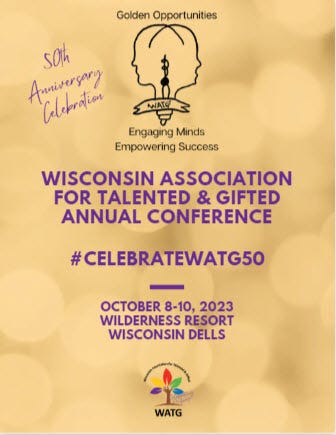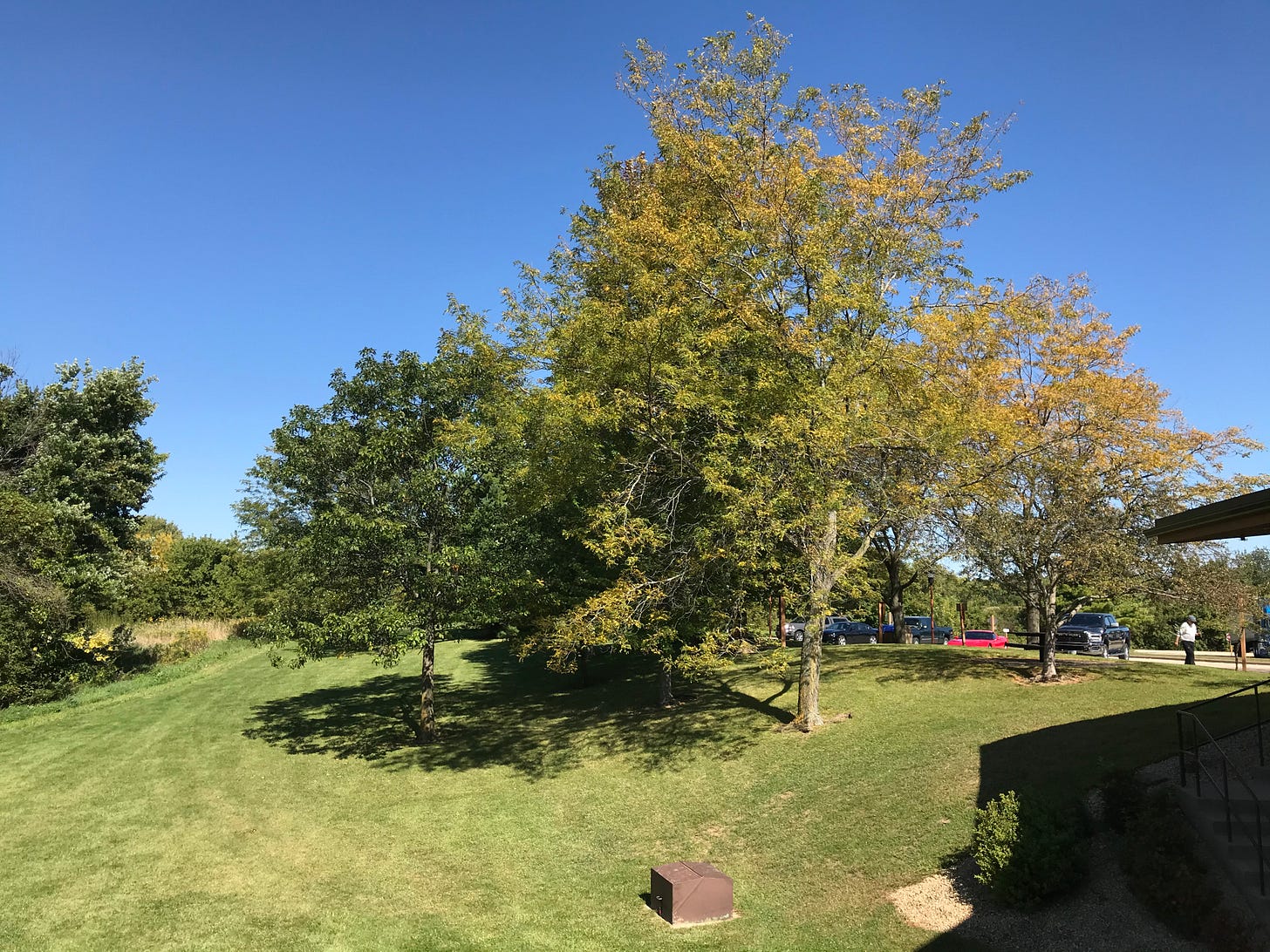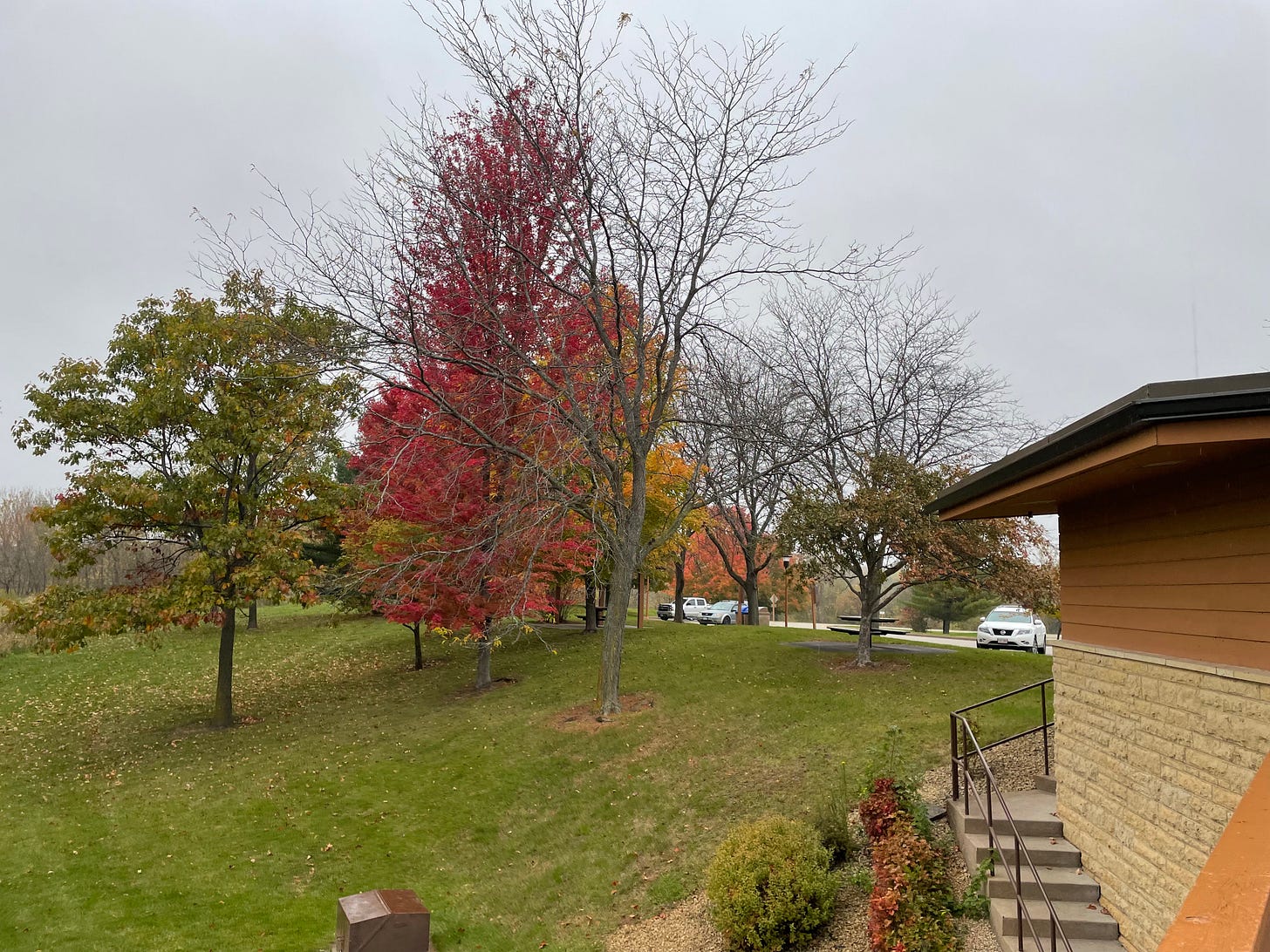Bonus Quotes and Rest Area Photos
Thoughts on giftedness and trips to Wisconsin
While I was re-reading Linda Silverman’s (1997) paper “The Construct of Asynchronous Development,” I realized that I wanted to share not only her words but some of the excerpts she included from other works. She was making the case for asynchronous development based on foundations from multiple disciplines. Some of the other authors were her colleagues from gifted education.
For instance, this is one of my favorite quotations from Michael. I added the first sentence of the paragraph for context:
“There is today a growing concern to find and nurture human potential for altruism, self-actualization, and high level of moral development. We need tools for identification and cultivation of such potentials. Dabrowski's theory of emotional development is such a tool; it is a theory of human transcendence toward a life inspired by universal ideals of human brotherhood, peace, service, and self-realization. The theory arose from his extensive clinical experience with gifted and talented children, adolescents, and adults. One of the basic characteristics of the gifted is their intensity and an expanded field of their subjective experience. The intensity, in particular, must be understood as a qualitatively distinct characteristic. It is not a matter of degree, but of a different quality of experiencing: vivid, absorbing, penetrating, encompassing, complex, commanding—a way of being quiveringly alive.” (Piechowski, 1992, p. 181)
That’s an excerpt from a conference paper Michael presented in 1991 at the Wallace Symposium at the University of Iowa1. For the past two years at Yunasa, Michael and I have done a workshop together called “Giftedness from the Inside Out.” I read the kids a few quotes I consider the best qualitative descriptions of giftedness which included the second half of the above paragraph.
The next one is from Wendy Roedell’s “Vulnerabilities of Highly Gifted Children”:
“There is general agreement that highly gifted children are more susceptible to some types of developmental difficulties than are moderately gifted or average children. Areas of vulnerability include uneven development, perfectionism, adult expectations, intense sensitivity, self-definition, alienation, inappropriate environments, and role conflicts.” (Roedell, 1984, p. 127)
The highly gifted see the layers of everything and are sometimes overwhelmed by the complexity of it all.
From a book called On Being Gifted by the American Association for Gifted Children (1978):
“We are not "normal" and we know it; it can be fun sometimes but not funny always. We tend to be much more sensitive than other people. Multiple meanings, innuendos, and self-consciousness plague us. Intensive self-analysis, self-criticism, and the inability to recognize that we have limits make us despondent. In fact, most times our self-searching leaves us more discombobbled than we were at the outset.” (p. 9)
It’s worth noting that Linda included the early incarnation of a quote from Grant & Piechowski I’ve already shared in Interesting Quotes, Vol. 5:
"For many theorists and researchers, explaining giftedness means describing the conditions that produce gifted achievements. Trapped by the metaphor of "gifts," they believe that the most important aspect of being gifted is the ability to turn "gifts" into recognizable and valued accomplishments. Most of the theories and models of giftedness that Cohen and Ambrose (1993) have examined are about maximizing giftedness. These models and theories regard gifted children much as farmers regard cows and pigs, with an eye to getting them to produce more. They do not describe how giftedness works—how the gifted think, feel, and experience." (Grant & Piechowski as cited in Silverman, 1997, p. 37)
Linda also included an abridged version of a quote I shared from Dąbrowski in Interesting Quotes, Volume 1:
As a result a person endowed with different forms of overexcitability reacts with surprise, puzzlement to many things, he collides with things, persons and events, which in turn brings him astonishment and disquietude. One could say that one who manifests a given form of overexcitability, and especially one who manifests several forms of overexcitability, sees reality in a different, stronger and more multisided manner. Reality for such an individual ceases to be indifferent but affects him deeply and leaves long-lasting impressions. Enhanced excitability is thus a means for more frequent interactions and a wider range of experiencing. (Dabrowski, 1972, p. 7)
Last but not least, these are from Annemarie Roeper: Selected Writings and Speeches from 1995:
“Emotions cannot be treated separately from intellectual awareness or physical development. All three intertwine and influence each other. A gifted 5-year-old does not function or think like an average 10-year-old. He does not feel like an average 10-year-old, nor does he feel like an average 4- or 5-year old. Gifted children's thoughts and emotions differ from those of other children, and as a result, they perceive and react to their world differently.” (Roeper, 1995, p. 74)
Annemarie Roeper’s insights about the inner experience of giftedness are invaluable for all of us wanting to better understand ourselves and the population we serve.
“Gifted children are different from the day they are born; they don't become different all of a sudden. Newborn babies have an awareness, a liveliness, and, sometimes, a nervousness that is quite apparent. We cannot have the same expectations of them that we apply to other children. In fact, we must forget about the usual expectations. We must expect the unexpected and accept this as the reality for these particular children.” (Roeper, 1995, pp. 144-145)
I wish I’d had this information before having a child because even though I grew up knowing I was gifted, I hadn’t been educated about this aspect of myself. I unintentionally revisited some of my past trauma on my son because I didn’t know any better.
“Gifted children are not better or faster than others, nor do they necessarily excel in the usually considered areas. They are basically different from other children. Very often, they are not skill learners; they are concept learners instead, so that in elementary school their giftedness may actually work against them. They have that special awareness. They are concerned with the complexities of the world. There are many factors, such as personal concerns, anxiety, or perfectionism, that might keep a gifted child from mastering school subjects, but we must be aware that what they do learn is often unique.
Their interests may be very specialized. The regular curriculum is not geared to the minds of the gifted, and yet they are expected to perform as if it were.” (Roeper, 1995, p. 146)
Currently, there are few places where you can learn how to work with the gifted in clinical practice. Few teachers learn about the nature of giftedness because the priorities in gifted education have shifted away from acknowledging that a psychological inner experience of giftedness exists.
“The problem of fitting in with norms is particularly acute for gifted children. We educate children to want to be the best, to climb the ladder to the top, rather than be themselves. In fact, we are involved in a give-and-take exchange of emotions and actions throughout our lives. Gifted children need to be appreciated for who they are, not what they do, and they need to be given opportunities to appreciate and support others. The objective of both home and school should be to move them toward self-actualization.” (Roeper, 1995, p. 176)
Conference Season
This year, I’ll be presenting in person at two conferences, and the first one is only ten days away.
This week, I’ve been preparing for my upcoming trip to Wisconsin. I’ll be presenting at the Wisconsin Association for Talented and Gifted (WATG) annual conference in Wisconsin Dells on October 10, 2023. This is their 50th anniversary, and I’ll be glad to return.
Last year was my first time attending WATG’s conference, and I enjoyed it. It’s so nice to be able to drop into a conference in the gifted community and feel welcome. I talked about “Overexcitability and Neurodivergence.” This year, my session will be about “Empowering Students with a Neurodiversity-Affirming Perspective.”
I’ve driven from Colorado to Wisconsin to visit Michael every late summer or fall since 2017, and I’m looking forward to my trip this year. I always stop and take photos at the Grant County, Wisconsin rest area (# 106), right over the Mississippi River from Dubuque, Iowa.
During the October 2019 trip, I also stopped in Iowa City to interview Michael’s friends, Nick and Kay Colangelo. Michael, Nick, and Kay shared an office together in the 1970s when they were all graduate students at the University of Wisconsin, Madison.
Here it is again in September 2020, the first pandemic trip.
That year, I was supposed to visit Michael on March 17, 2020, and of course, the trip was canceled because of COVID. I interviewed Millard Susman via phone instead of in person. Dr. Susman was Michael’s major advisor during his first PhD in molecular biology. I’d found Millard’s oral history interview about his time at the University of Wisconsin and was amazed to discover that he talked about having Michael as his first graduate student. Michael helped me set up an interview with him, which was fascinating.
Another photo of the border rest area from October 2021.
In 2021, I drove first to Michigan and Indiana to pick up books from two women who retired from gifted education and donated their professional libraries. That happened thanks to Michele Kane, from Episode 14, who told her friends about my work to build an archive. I’ve been collecting materials about Dąbrowski’s theory and giftedness for several years.
The theory doesn’t apply only to the gifted, and not all gifted people resonate with overexcitability and positive disintegration. But personally, I’ve found learning about TPD and giftedness to be critical to my self-understanding and self-acceptance as an intense, gifted individual. As a researcher, I recognize this is our scholarly lineage, and we can learn from our past and build on it.
Last fall, I flew to Wisconsin, so I don’t have any photos from the border rest area.
References
American Association for Gifted Children. (1978). On being gifted. Walker.
Dabrowski, K. (1972). Psychoneurosis is not an illness. Gryf.
Piechowski, M.M. (1992). Giftedness for all seasons: Inner peace in a time of war. In N. Colangelo, S. G. Assouline, & D. L. Ambroson (Eds.), Talent development: Proceedings from The 1991 Henry B. and Jocelyn Wallace National Research Symposium on Talent Development (pp. 180-203). Trillium Press.
Roedell, W. C. (1984). Vulnerabilities of highly gifted children. Roeper Review, 6, 127-130. https://doi.org/10.1080/02783198409552782
Roeper, A. (1995). Annemarie Roeper: Selected writings and speeches. Free Spirit.
Silverman, L.K. (1997). The construct of asynchronous development. Peabody Journal of Education, 72(3&4), 36-58. http://www.jstor.org/stable/1493035
In 2024, the Wallace Symposium will be held at UCONN.







What about Dabrowski conference in July?? Is that also for professionals or anyone can attend it?
I didn’t realize that conference is for professionals. I thought it’s open for parents too.